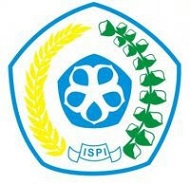Model Bimbingan Kelompok PPPM Untuk Mengembangkan Pikiran Rasional Korban Bullying Siswa SMK Etnis Jawa
DOI:
https://doi.org/10.26740/jp.v2n2.p91-99Keywords:
Model Bimbingan Kelompok PPPM, Pikiran Irasional, Korban Bullying, Siswa SM, Etnis JawaAbstract
Abstrak
Penelitian ini merupakan penerapan model bimbingan kelompok PPPM untuk mengembangkan pikiran rasional korban bullying siswa SMK etnis Jawa. Tujuan penelitian untuk menguji keefektivan model bimbingan kelompok PPPM untuk mengembangkan pikiran rasional korban bullying siswa SMK etnis Jawa. Rancangan penelitian adalah eksperimen dengan desain pretest and posttest control group. Keefektivan model bimbingan kelompok PPPM dapat dilihat dari hasil uji beda pikiran rasional korban bullying yang diberi model bimbingan kelompok PPPM dengan siswa yang diberi bimbingan kelompok non PPPM. Berdasarakan hasil analisi data siswa yang diberkan perlakuan bimbingan kelompok non PPPM memperoleh rata-rata nilai (mean) sebesar 2,8333, sedangkan siswa yang diberikan model bimbingan kelompok PPPM memperoleh rata-rata nilai (mean) sebesar 21,8333. Hasil 14thitung"> sebesar 8,037, karena harga 14thitung"> lebih besar dari harga 14ttabel"> yaitu: 8,037 > 2,228 pada α = 5% maka dapat disimpulkan model bimbingan kelompok PPPM efektif mengembangkan pikiran rasional korban bullying siswa SMK etnis Jawa.
Abstract
This research is the application of PPPM group guidance model to develop rational minds of victims of bullying SMK students of Java ethnic. The objective of the study was to test the effectiveness of PPPM group guidance model to develop rational minds of victims of bullying of Javanese vocational high school students. This study, uses experimental design with pretest and posttest control group design. The effectiveness of PPPM group guidance model can be seen from the result of different test of the irrational mind of bullying victim who was given the model of PPPM group guidance with the students who ware given the guidance of non PPPM group. Students who were given non-PPPM group counseling treatment obtained an average of 2.8333, while the students who are given the model guidance group PPPM obtained the average value (mean) of 21.8333. From the analysis results obtained by 8,037, because the price is greater than the price is: 8,037> 2.228 at α = 5% it can be concluded that the model guidance group PPPM effectively develop rational minds of victims of bullying students of SMK ethnic Java.
References
Baron, R.A. & Byrne, D., 2012. Psikologi Sosial, Jakarta: Erlangga.
Beck, J.S., 2011. Cognitive Behavior Therapy, New York: Guilforde Press.
Bieiling, P.J., McCabe, R.E. & Antony, M.M., 2009. Cognitive-Behavioral Therapy in Groups, New York: Guilford Press.
Capuzzi, D. & Gross, D.R., 2007. Counseling and Psychotherapy: Theories and Interventions, New Jersey: Pearson Prentice-Hall.
Coloroso, B., 2004. The bully, the bullied and the bystander, New York: Harper Collins.
Corey, M.S., Corey, G. & Corey, C., 2012. Theory and Practice of Group Counseling, Belmont, CA: Brooks/Cole.
Cormier, L.J. & Cormier, L.S., 2009. Interviewing Strategies for Helpers, Montery, California: Brooks/Code Publishing Company.
Dalgleish, T. & Power, M.J., 1999. Handbook of Cognition and Emotion, New York: John Wiley & Sons.
Depdiknas, 2007. Rambu-Rambu Penyelenggaraan Bimbingan dan Konseling dalam Jalur Pendidikan Formal (Naskah Akademik), Bandung: ABKIN.
Dobson, K.S., 2010. Handbook of Cognitive Behavioral Therapies, New York: The Guifold Press.
Endaswara, S., 2003. Falsafah Hidup Jawa, Yogyakarta: Cakrawala.
Endraswara, S., 2010. Etika hidup orang Jawa: pedoman beretiket dalam menjalani kehidupan sehari-hari, Yogyakarta: Suka Buku.
Endraswara, S., 2016. Ilmu Jiwa Jawa, Yogyakarta: Pustaka Narasi.
Gorodnichenko, Y. & Roland, G., 2016. Culture, institutions and the wealth of nations. Review of Economics and Statistics, 99(3), pp.402416.
Gysbers, N.C. & Henderson, P., 2006. Developing and Managing Your School Guidance and Counseling Program, Alexandria: ACA.
Huang, Z. et al., 2016. Risk Factors Associated with Peer Victimization and Bystander Behaviors among Adolescent Students. International Journal of Environmental Research and Public Health, 13(8), p.759.
Huneck, A., 2007. Bullying¯: A crosscultural comparison of one American and one Indonesian elementary school, Ohio: Union Institute & University.
Johnson, D.W. & Johnson, R., 2016. Cooperative learning and teaching citizenship in democracies. International Journal of Educational Research, 76, pp.162177.
KPAI, 2017. Bank Data KPAI. Available at: http://bankdata.kpai.go.id/data-terpilah-kasus-anak [Accessed February 28, 2017].
Mennuti, R.B., Freeman, A. & Christner, R.W., 2012. No Title, New York: Routledge Taylor & Francis Group.
Nelson, J., 2011. Teori dan Praktik Konseling dan Terapi, Yogyakarta: Pustaka Pelajar.
O`Connell, J., 2003. Bullying at school, California: Departement of Education.
Rigby, K., 2003. Consequences of bullying in schools. The Canadian Journal of Psychiatry, 48(9), pp.583590.
Santrock, J.W., 2008. Adolescence, New York: Mc Graw-Hill Higher Education.
Sartini, 2009. Mutiara Kearifan Lokal Nusantara, Yogyakarta: Kepel Press.
Simons, S.R. & Mawn, B., 2010. Bullying in the workplace”A qualitative study of newly licensed registered nurses. AAOHN journal, 58(7), pp.305311.
Smahes & Kaveri, The Role of Media in Development, New York: Springer.
Downloads
Published
How to Cite
Issue
Section
 Abstract views: 3097
,
Abstract views: 3097
, PDF Downloads: 2346
PDF Downloads: 2346








.png)





